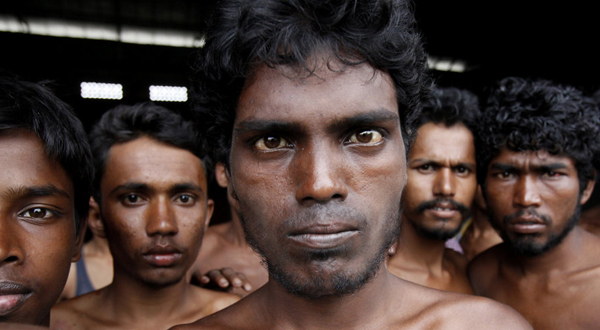Once-lush hillsides have been stripped bare and transformed into squalid tent cities as Rohingya refugees pour into Bangladesh, joining thousands enduring hunger and disease after fleeing violence in Myanmar.
After dangerous boat crossings or gruelling journeys on foot with little food or water, they do what little they can to shield their families from monsoon rains, frantically building shelters from bamboo and scraps of tarpaulin.
In the last two weeks 164,000 mostly Rohingya civilians have fled an eruption of fighting in Myanmar, overwhelming refugee camps in Bangladesh that were bursting at the seams even before the latest influx.
Once they arrive, they face fresh threats to survival.
“All my children have cold and fever. These plastic sheets cannot protect us from the monsoon,” Fatimatuz Zuhra told AFP on the blighted hillsides of Unchiprang, some 20 kilometres (12 miles) from the border.
“I have no idea what I will do if I have to live here longer. I think about the winter and I am terrified,” she said as she squatted in the mud near her makeshift dwelling, one of some 15,000 people taking refuge there.
New settlements are mushrooming across Bangladesh — in fields, hillsides and along roads and rivers — after the exodus that followed a massive Myanmar security sweep following deadly ambushes by Rohingya militants.
But the impoverished country — which already housed 400,000 Rohingya before the latest influx — is ill-equipped to deal with a situation that aid agencies warn is rapidly becoming a humanitarian catastrophe.
At least 33,000 Rohingya who have crossed since August 25 are living in “spontaneous settlements” like Unchiprang which are quickly expanding, the United Nations said in a report this week.
It said many from the stateless Muslim minority, who Myanmar regards as illegal immigrants, were “staying in the open air, suffering from exhaustion, sickness and hunger” after walking for days





